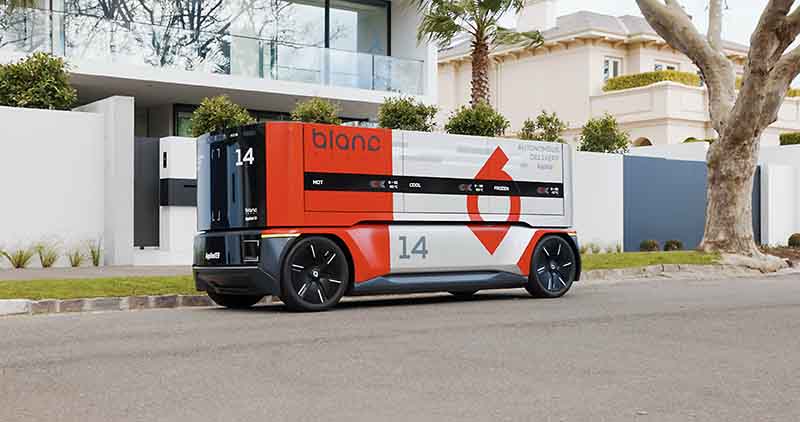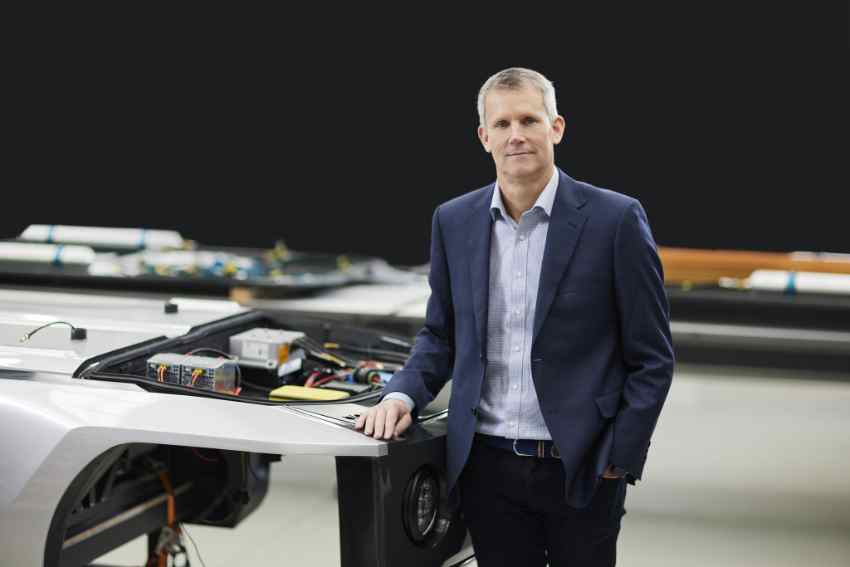Founded in 2015, Applied EV is a Mobility as a Service (MaaS) company on a mission to revolutionise the future of transport with programmable, autonomous-ready Software-Defined Vehicle solutions.
Applied EV integrates autonomous technologies into a centrally controlled stack, helping accelerate the delivery and adoption of autonomous transport solutions. They’re creating driverless, efficient transport solutions with Automotive Safety Integrity Level (ASIL) architected applications for the automotive and industrial sectors.
Working with category-defining customers and partners such as Suzuki, NXP and Toshiba, the company integrates their technology into a range of vehicles of many sizes, for applications addressing logistics, agriculture, mining, and defence.
Interview with Julian Broadbent, CEO of Applied EV.
Easy Engineering: What are the ranges of products/services?
Julian Broadbent: Digital Backbone™, a purpose-built control system for electric and autonomous applications. It contains all the functions of control and management of the vehicle, and is carefully crafted to comply with the highest safety ratings.
The Digital Backbone™ combines state-of-the-art software and hardware for handling veritably all the functions of an autonomous electric vehicle. This process simplifies vehicle architecture, removes hundreds of components, reduces production costs, increases efficiency, and makes the entire ecosystem more sustainable. Doing so, it unlocks the complexity of all control and management functions of the vehicle to the highest functional safety standards in the automotive world.

With a carefully crafted structure, Digital Backbone allows for rapid software application engineering (by us or our customers), using an SDK on top of a 100% safety managed control platform.
The Digital Backbone powers Applied EV’s proprietary AV transport platform, the Blanc Robot. The Blanc Robot™ is a cabinless, driverless vehicle, configurable for multiple autonomous commercial uses, including on-road and off-road applications.
E.E: What are the main areas of activity of the company?
J.B: While currently applicable to small-scale vehicles, our goal is to deploy Digital Backbone™ in a range of vehicle architectures with a strong focus on integration capabilities at scale.
We have structured our business around three activities, all underpinned by our Digital Backbone. Initially, we supply and integrate the Digital Backbone into a nominated vehicle architecture. This can be anything from a specialty vehicle through to a mass production passenger or truck application. Then, we partner with OEMs to manufacture and supply a Blanc Robot variant based on a production vehicle. Importantly, once the system has been integrated into a first architecture, subsequent architectures can be delivered rapidly, underpinned by Applied EV’s internal automotive product knowledge and capabilities. The final product, an autonomous ready vehicle, is leased as a Mobility as a Service (MaaS) offering to customers for autonomous vehicle driving applications.
E.E: What’s the news about new products/services?
J.B: Towards the end of 2023, Applied EV’s core product, a Central Control Unit (CCU) for Software Defined Machines, Digital Backbone™, was evaluated by TÜV SÜD. The results show the intended safety concept of the CCU, as specified, represents a suitable foundation for fulfilling the requirements of ASIL-D per standard ISO 26262.

Applied EV announced a collaboration with NXP® Semiconductors to jointly make a substantial contribution towards a safer and more connected autonomous electric mobility. As part of this strategic relationship, NXP and Applied EV will share ideas and information, work to develop mutually-beneficial strategic and production partnerships, and drive forward innovation in the field of Software-Defined Vehicles and Electrical and Electronic Architecture (EEA) for mutual benefit.
E.E: What is the state of the market where you are currently active?
J.B: Headquartered in Australia, Applied EV has built a global business across Europe, Asia, and Oceania (with more locations under consideration) to support activity with our customers and partners.
The initial market for Applied EV is commercial and logistics applications will be the first cab off the rank for the utilisation of autonomous vehicle technology. This is where the impact and opportunity are more profound. We’re already working on several confidential programs in parallel for industrial and logistics fleet operations that provide immense and immediate opportunities to support the industry towards driverless business models.
Applied EV’s proprietary Digital Backbone™ is already a world-first for the industry, but transitioning this into something universal is something no third-party has been able to achieve.

E.E: What can you tell us about market trends?
J.B: The megatrends driving the shift are indisputable and the industry is embracing Software-Defined Vehicles as the key enabler of innovation, heading towards a future where transport will look very different and business models turn upside down.
Software has enabled OEMs to offer features such as apps, OTA updates, cloud connectivity, mobile and home integration, all delivered on a big, beautiful screen. These features are highly valued by customers – their in-car experience mirrors what they have come to expect with computers and mobile devices.
Most are taking a traditional approach, where legacy systems are incrementally improved within today’s operations and supply chain environment. This is logical – it delivers early wins, uses well-established processes, and protects historical investments in technology.
However, while legacy systems can deliver a Minimum Viable Product, they can’t be upgraded to support the critical safety-rated features that the market will demand over the coming decade. As a result, they have a limited life before needing to be replaced and investment in legacy systems is at risk of write-off in a short timeframe.

E.E: What estimations do you have for the rest of 2024?
J.B: As the industry becomes aware of the benefits of using AVs across logistics and commercial applications where autonomous vehicles can be deployed safely, technology companies – like Applied EV – are moving from development into commercialisation.
Through a mix of clear vision, smart design and hard work, we have delivered a Software-Defined Vehicle solution that is safety-rated, highly adaptable and future-proof for autonomous applications, providing capabilities that are years ahead of many OEM roadmaps.
Now in our growth phase and on a strong pathway to deeper commercialisation, we continue to evolve our core technology, hit major milestones through the order process, and expand our integration programs further.
